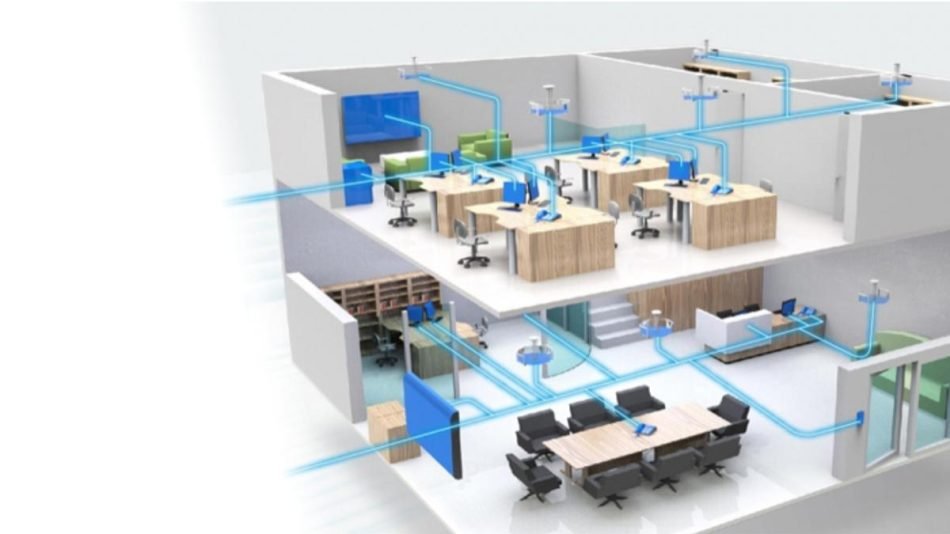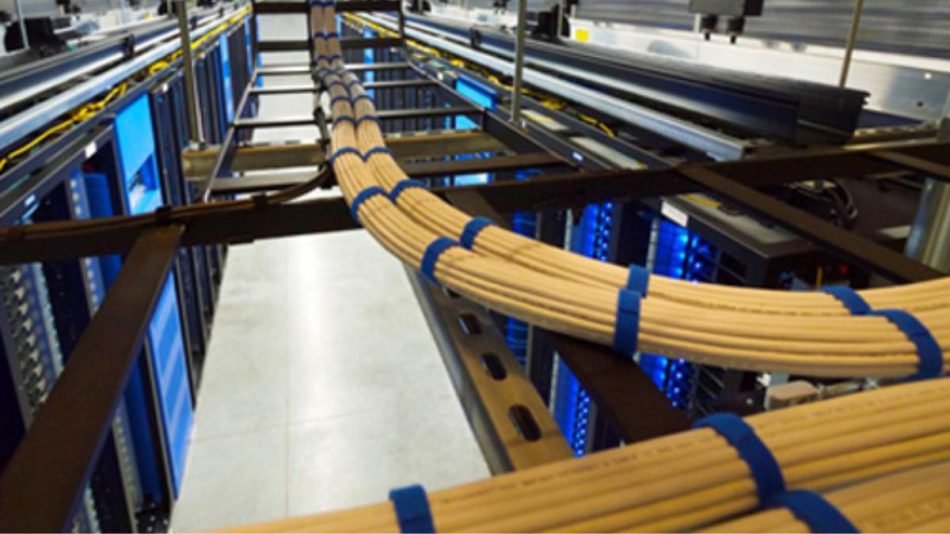Voice and Data
The Importance of Voice and Data Installation Design in Construction Planning
In the digital age, connectivity and communications are essential elements for the efficient operation of any organization. Voice and data installations act as the backbone of these communications, and their proper design is of vital importance. In this article, we will explore in depth the importance of the design of these facilities from the projection of a construction site.
Evolution of Network Technologies
- Data Distribution: Historically, workstations had local copies of all necessary data. However, with the advent of network operating systems and “virtual disks,” data distribution has changed. Instead of relying on local storage, institutions now use “virtual disk” mounting systems to access needed data. While this has solved many problems, it has also presented new challenges, such as network disruption resulting in loss of data access.
- Application Distribution: With the rise of applications critical to day-to-day operations, such as email and other business systems, effective application distribution has become crucial. The network must be able to support these applications effectively to ensure smooth workflow.
- Service Convergence: The convergence of data, voice and video services has been a significant change in the industry. Universities and colleges have adopted VoIP systems to replace legacy telephony systems. In addition, video technologies have been increasingly integrated into existing networks.
- Network Integration: The migration of core infrastructure systems to converged networks has been a major advance. Building automation, access control, intrusion and fire alarm systems are now integrated into these converged networks, increasing operational efficiency and security.
- Dependence on Internet Connectivity: Today, dependence on Internet connectivity is critical. Organizations rely on internal and external communications for their daily operations. Therefore, reliable and robust connectivity has become a necessity.

VoIP as a Converged Network Engine
The widespread deployment of VoIP has been a major driver of network convergence. Traditionally, organizations maintained dual network infrastructures: one to provide traditional telephone services (POTS) and another for data network services. This resulted in additional expense to install and operate two different networks. With the adoption of VoIP, organizations can unify these services into a single infrastructure, reducing costs and simplifying management.

Network Architectural Model
A well-designed network architectural model is essential to ensure long-term network scalability, efficiency and reliability. The classic three-layer model, which includes the access, distribution and core layer, provides an organized and scalable structure that allows for sustainable growth and easy maintenance.
- Access Layer: The access layer is the connection point for end-user systems. It uses network switches to provide connectivity over Ethernet cabling. The strategic placement of this layer in telecommunications rooms (TR) allows for efficient distribution of cabling to workstations.
- Distribution Layer: The distribution layer acts as an aggregation point for connections from all access layers and links them to the core layer. As it is typically located in a building, it facilitates the connection between the workstations and the central layer. The use of fiber optic uplink cables ensures optimal transfer speeds and greater flexibility in the network.
- Core Layer: The core layer is the backbone of the network, interconnecting all distribution layers. Its fully meshed topology provides fault tolerance and guarantees uninterrupted data flow in the event of a link or device failure.

Structured Cabling Systems
The design of structured cabling systems is essential to ensure an organized and scalable infrastructure. These systems are designed to standardize the installation of cabling in buildings while maintaining cleanliness and order. In addition, they allow for a “one design, multiple build” model, which facilitates replication in new buildings and reduces management complexity.

Key Considerations for Network Implementation
Network implementation requires specific considerations to ensure optimal performance and infrastructure security. Some of these considerations include:
- Local Code Compliance: It is critical to comply with local building and fire codes when selecting cable jacket composition. Choosing materials with the appropriate fire resistance (FT) rating is essential to ensure fire safety.
- Proper Termination: Proper termination of cabling in both the workstation and telecommunications room is essential to ensure optimal network performance. Poor connections can result in data loss and performance degradation.
- Protection and Certification: Proper protection of cable plant and certification of cabling are critical steps in ensuring the quality and safety of installations. Certification ensures that cabling complies with standards and can support specific speeds and performance.

Network Management and Monitoring
Effective network management and monitoring are essential to ensure trouble-free operation. Management tools, such as SNMP (Simple Network Management Protocol), provide real-time information on the status and performance of network devices. In addition, availability and traffic monitoring applications, such as MRTG (Multi Router Traffic Grapher) and CACTI, are essential to ensure optimal network performance and rapid response to potential problems.

Practical Examples and Case Studies
To illustrate the practical application of the concepts discussed, we will consider several examples of voice and data installation design and implementation projects in different types of organizations.
- Case Study: Network Design for a University, Imagine the scenario of designing and implementing voice and data installations for a university with thousands of students and multiple buildings. In this case, the convergence of data, voice and video services would be essential to optimize the infrastructure and ensure seamless communication between students and staff. A multi-layered network architectural model would be implemented to ensure an organized and scalable structure. The access layer would be distributed in each university building, the distribution layer would connect these buildings, and the core layer would serve as the backbone of the network to ensure seamless communication. In addition, a structured cabling system that complies with appropriate standards, such as Category 6, would be used to ensure adequate transmission speed and future expansion.
- Case Study: VoIP Implementation in a Global Enterprise In another scenario, consider a global enterprise looking to implement VoIP to improve internal communication and reduce costs. In this case, the design of a converged network would be critical to unify the voice and data infrastructure. A detailed requirements analysis and assessment of the existing infrastructure would be implemented to ensure a smooth transition to VoIP. An appropriate network architectural model would be implemented to ensure efficiency and scalability. In addition, extensive testing and appropriate staff training would be conducted to ensure successful adoption of VoIP throughout the organization.

Proper design of voice and data installations is crucial to the efficient operation of modern organizations. As technologies continue to evolve and dependence on connectivity increases, investment in a robust design and scalable infrastructure is more critical than ever. Convergence of technologies, VoIP implementation and application of network architectural models are key elements in the successful planning and execution of these installations. At Alher Sem, we have the experience and knowledge to ensure optimal design and effective implementation of voice and data networks in projects of any size. Contact us to explore how we can help you achieve a world-class communications infrastructure.
Learn more about this service
Click here and find out more about our services.
Te enviaremos el artículo directamente a tu E-mail de manera instantánea.
Enviando datos, espere un momento
¡Datos enviados correctamente!
Tu mensaje será atendido en un momento
¿Desea enviar otro mensaje?
Comments
We are interested in your opinion, please leave us a comment